#japanese silverleaf
Text
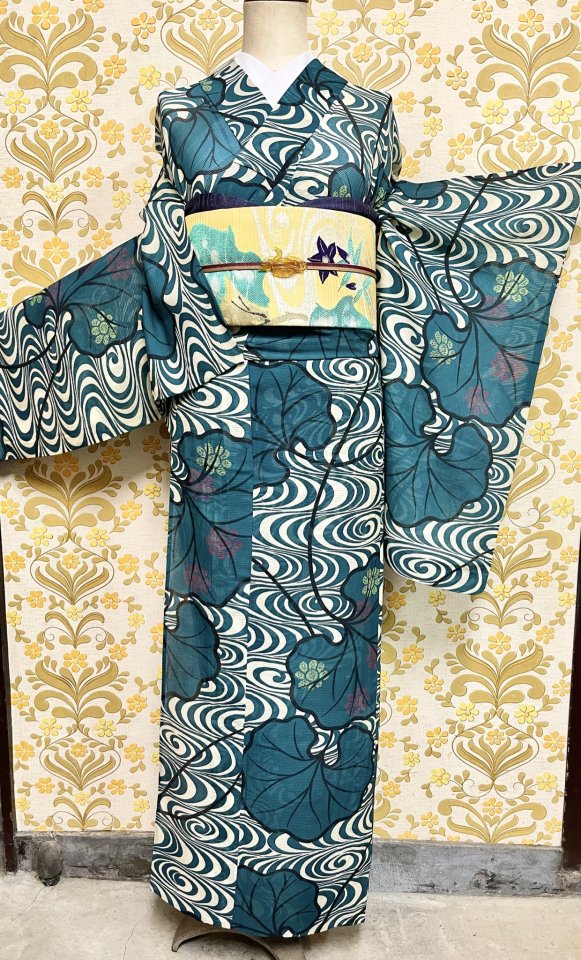


Fantastic greens for this tsuwabuki (leopard plant, Japanese silverleaf) themed summer outfit.
The kimono has a kanzemizu (swirling water pattern, originated from Kanze school of Noh) ground, while the obi also presents kikyo (Chinese bellflower) over ryuusui (running water/stream).
#japan#fashion#kimono#obi#summer in japan#tsuwabuki#leopard plant#japanese silverleaf#kanze mizu#ryuusui#swriling water#running water#stream#kikyo#chinese bellflower#着物#帯
543 notes
·
View notes
Text
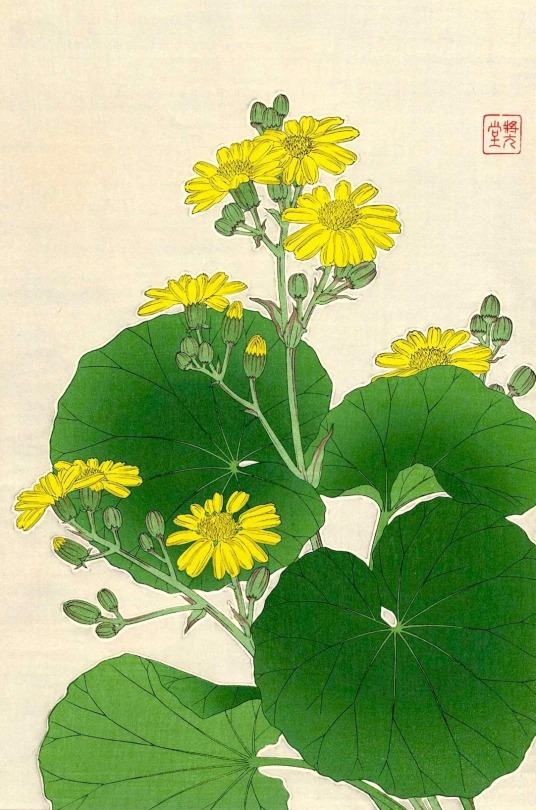
Shodo Kawarazaki - "Japanese Silverleaf"
woodblock print, c. 1930-39
33 notes
·
View notes
Text
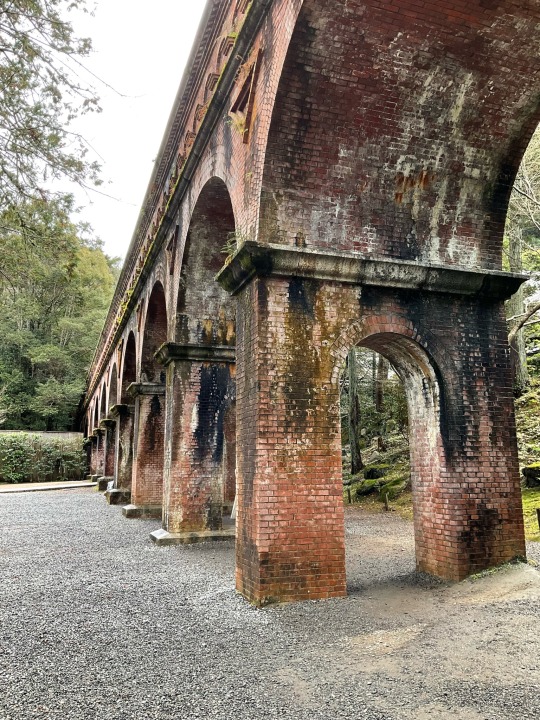
Sunday January 15/2023
We took a bus to the outskirts of Kyoto Center. Simon had planned a walk along an ancient canal on a route that was mostly flat. Along the way, we saw plenty of shrines and temples. Kyoto is famous for its shrines and temples.
Our first stop was Higashiyama Jisho-ji: this was an unfinished temple that was supposed to be covered in Silverleaf, but never was. The rest of our walk today followed the philosophers path along the canal, with temples and shrines uphill on the left and ancient homes downhill on the right.
The canal contoured across the hillside with cherry trees arching over the canal. It would be a beautiful place to walk when the trees are in blossom.
At one point we met a man making bamboo leaf boats for people to drop into the water. He was offering them to everyone passing. I took one and dropped it to the clear running water of the canal. It sat right on the water, and the man cheered. By this simple act, he made us happy and brought smiles to our faces.
After a few more shrines and temples, I noticed a small shop selling different and unique pieces. Surprisingly, the owner was an artist. He would draw Japanese scenes on pairs of jeans or any other piece of clothing he had for sale. I bought two pieces of fabric suitable to make a child kimono, but I’m going to use them as a wall hanging.
We stopped at small shrine that was ceremoniously burning the festival amulets from the recent New Year’s celebrations. Simon spent some time chatting in English with Ito the head Shinto monk.
After passing through the Eikandocho Gardens and Nanzen-ji temple, we stopped at a brick aqueduct. It carried the water from a canal across a small valley. The scenic structure was being used as a backdrop by numerous young girls in traditional kimono attire.
I spent some time watching those girls and admired their look. Simon helped them with their photographs. We continued on the canal to reach the waterworks and catch a subway back to Kyoto station, where we had a late lunch.
0 notes
Photo
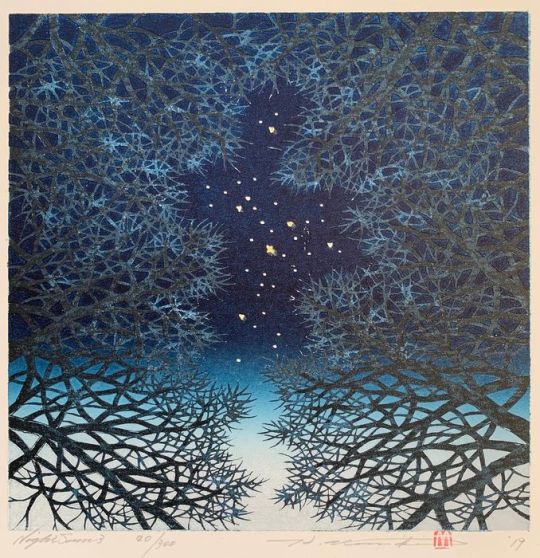
Night Scene 3 - Hajime Namiki, 2019.
Japanese, b.1947-
Colour woodblock print on silverleaf,
758 notes
·
View notes
Text
Revolutionary Girl Utena - Name Games

桐生 Kiryuu 冬芽 Touga
So the basic reading of the surname Kiryuu here is something like “Paulownia Birth/Life/Origin,” referring to the tree, and in conjunction with that meaning either something like where the “Paulownia Tree(s) Grow” as a fairly conventional place name. But I think there’s kind of a joke in here. In different contexts [生] can also mean “Student,” which doesn’t immediately make sense here as part of a surname, but the Paulownia tree is also strongly associated with the Prime Minister seat in the Japanese government. (it’s the official seal of the Prime Minister, chosen during the Meiji Restoration and in parallel with the Emperor’s throne being represented by a Chrysanthemum seal) So although Japan doesn’t have a president, their chief elected official is represented by the Paulownia crest. So in an obtuse reading, Kiryuu’s last name is a pun on “Student President.”
Touga [冬芽] is a nice super easy one; it means “Winter Bud.“ Appropriate for someone who grew up too early, and into inhospitable circumstances, and with a cold and lonely disposition. The growing up too soon bit in particular is reflective of his hyper sexual identity as a ladies man, while his refusal (and later apparent inability) to connect with the girls he fools around with are the cold and the lonely parts. In the Adolescence of Utena movie he is also given an alternative backstory in which he is adopted by his father and sexually abused, giving a new angle to the idea that he grew up too soon, but not by his own choice or natural disposition.
In a stunningly deft move, Ikuhara staged Kiryuu’s childhood rape scene in the movie in a field of what appear to be cabbages, which are a winter blooming crop. To snag a line out of the wiki page for the broader entry on Cabbage plants:
“Flowering induced by periods of low temperatures (a process called Vernalization: The induction of a plant's flowering process by exposure to the prolonged cold of winter, or by an artificial equivalent.) only occurs if the plant is past the juvenile period... Vernalization allows the plant to grow to an adequate size before flowering.”
Giving a new more highly specific interpretation of the name “Winter Bud,” and the specific implications that name has on Kiryuu’s psycho-sexual development as a teenage sexual assault survivor.
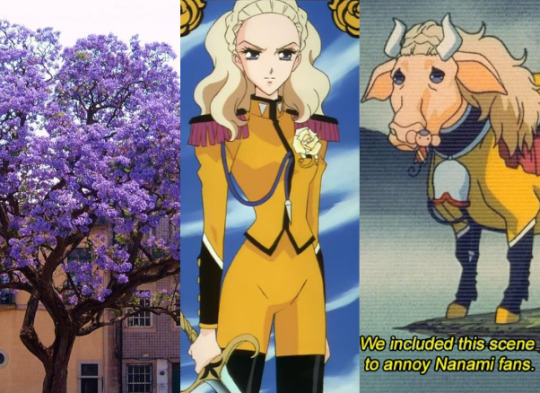
桐生 Kiryuu 七実 Nanami
Nanami’s name is written [七] the number “Seven” and, [実] “Truth” or “Reality.” Given her somewhat delusional interpretation of her relationship with her brother, I’m tempted to read this as a nod to her fairly persistent denial of reality throughout the story; but if I’m being honest, I don’t think feel like that kind of reading is really Ikuhara’s style. But apart from that I don’t really know what to make of this name in the context of everything Nanami is and does in the story. I certainly don’t think Ikuhara didn’t mean anything by it, but I just don’t know what. Feel free to try and dig into this one yourself if you’ve got an inkling, and let me know what you come up with.
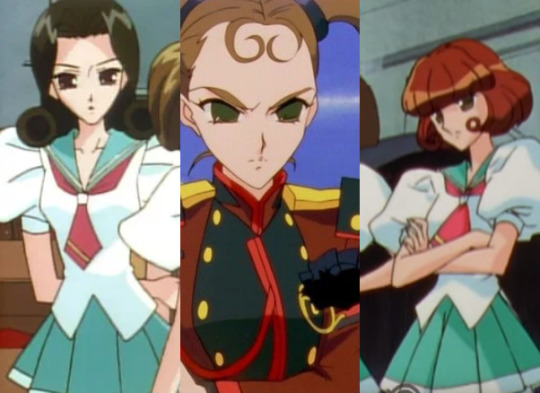
苑田 Sonoda 茎子 Keiko, 大瀬 Oose 優子 Yuko,
& 脇谷 Wakiya 愛子 Aiko
“Garden Field (plant)Stem-child,” “Big Current/Rapids Gentle-child,” and “Side Valley Love-child” respectively. These names aren’t made to really mean anything on their own, they’re all pretty generic and even normal sounding names for Nanami’s trio of schoolgirl bullies. BUT!
...The joke here is that the kanji -ko [子] is a super generic suffix for names (you can basically take any common noun and slap a [子] to turn it from sounding like just word into sounding like a name) In turn it can almost be ignored when reading a name for its meaning, and what the leaves is that each of the girls also has a name that sounds like a letter.
So, their given names sound like “Girl-K,” “Girl-U,” and “Girl-I.” This is in the common style of Japanese news reporting or police procedural tropes where anonymity (very often upheld specifically where minors are involved) are referred to as Girl A, Girl B, or Boy A, Boy B, or Child A, etc... (This is also how the shadow puppet girls in the interludes of the show are named: A子, B子, C子, F子, and E子.) So, basically Nanami’s trio of goons are meant to be a halfstep away from being literally faceless extras: Anonymous.
Oh, and together they spell IKU as in Ikuhara Kunihiko [幾原 邦彦] the creator of the show. (I’ll be honest, other than Keiko being the Black Rose duelist in arc two, I can’t actually tell which of the other two is which...)
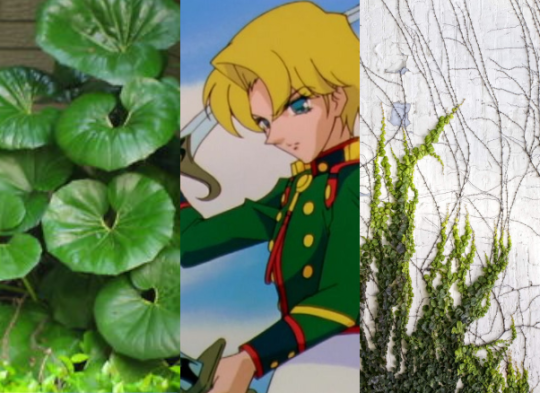
石蕗 Tsuwabuki 美蔓 Mitsuru
Tsuwabuki [石蕗] is the name of the “Japanese Silverleaf” and Mitsuru [美蔓] reads “Beautiful Vine” or maybe better read as “Beauty Vine.” The “Vine” part here pretty clearly refers to his clingy nature as Nanami’s little pet goon. I can’t tell if the meaning is that his clinginess is (in a kind of misguided innocent way) beautiful, or if its beauty that he clings to.
I can’t help but notice that the Farfugium japonicum is in the same Family, Asteraceae, as the Petasites japonicus(The Giant Butterbur); The kanji [蕗] is the general name for Butterbur. I point this out because the Ainu people of the Hokkaido region have a folk lore creature called a [コロポックル] Koropokkuru, from Ainu words meaning, “(Lives) Under the Butterbur.“ Mythologically they are tiny spirits who live under the broad leaves of the butterbur plant. They were benevolent spirits who would leave gifts for the Ainu people, but on the condition that they could never be seen. But I feel like that’s not necessarily an intended reading of that...
...Previous post: Next post...
84 notes
·
View notes
Photo

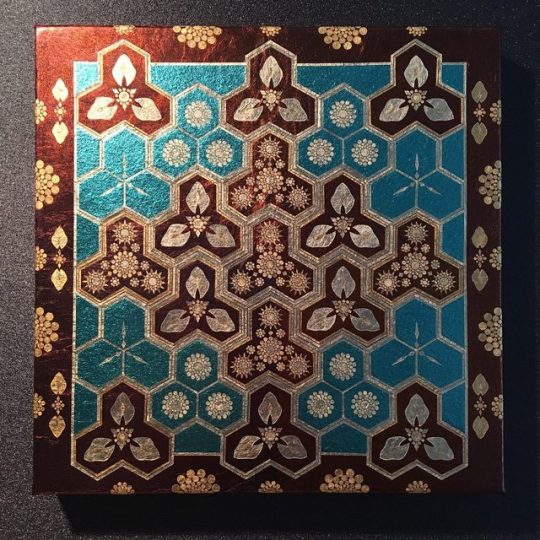
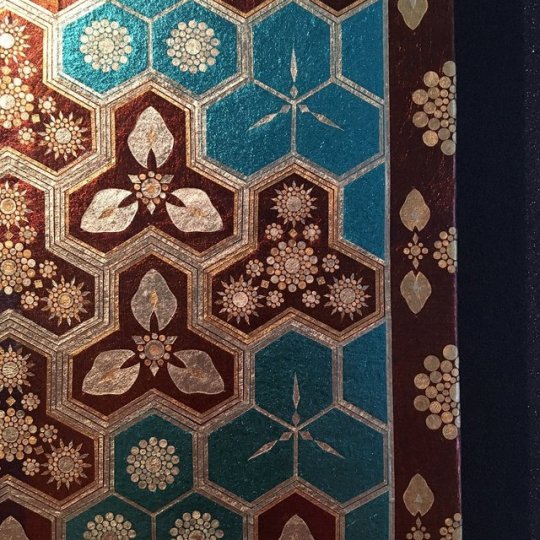
size: 227 x 227 x 22 mm #gold #goldleaf #silver #silverleaf #asia #japan #japanese #金箔 #銀箔 #文様 #箔 #亀甲 #毘沙門亀甲 #hisahirofukasawa #深沢尚宏
3 notes
·
View notes
Note
Hi! Prepare to be bombarded with names! Bluejay (silk/sky) Adder (sand/hive adder bug) Silverleaf (leaf/hive silverleaf whitefly) Sakura (rain/leaf, japanese for cherry blossom), Chrysothemis (rain/any, tropical plant), Khione (ice, greek goddess of snow)Umbra (rain/night) Chuparosa (sand/rain), Amber Phantom (silk/night/rain, amber phantom butterfly) Scorpionfly (sand/hive, a real bug) Arcane (night/any)Elodea (leaf/sea), Wood-Nymph (silk/leaf) and Duskywing (silk/night, duskywing butterfly)
:0 ty anon!
4 notes
·
View notes
Photo
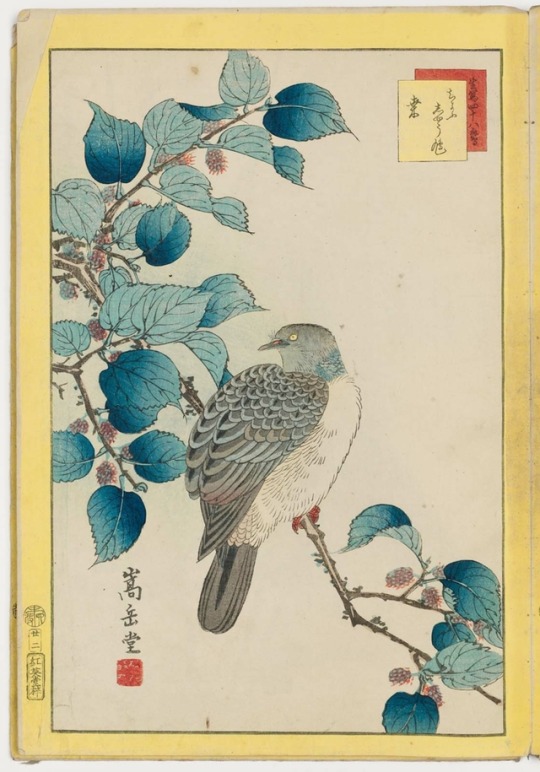




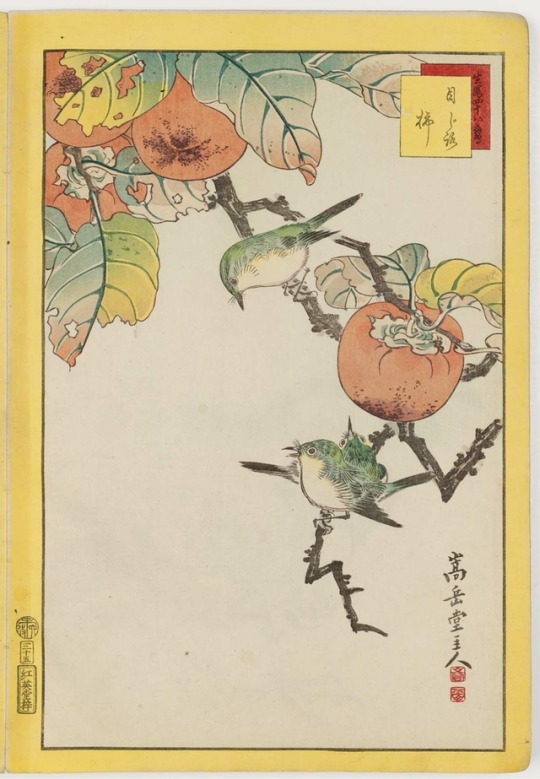


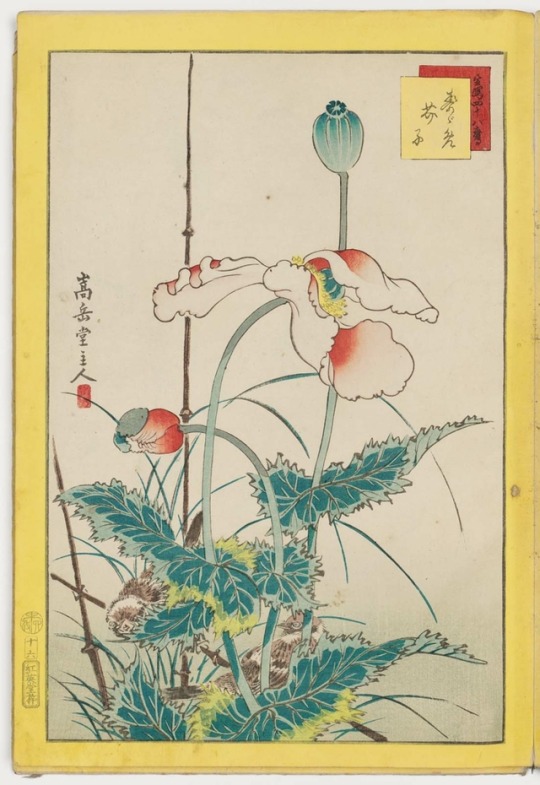

1) Dove and Mulberry
2) Returning Swallows and Tampala
3) Green Parakeet and Japanese Allspice
4) Chicks and Japanese Silverleaf
5) Manchurian Great Tit and Late Blooming Cherry
6) Japanese White-eye and Persimmon
7) Dusky Thrush and Ground Cherry
8) Kingfisher and Kerria Roses
9) Sparrows and Poppies
10) Wagtail and Narcissus.
Woodblock prints from the series ‘Forty-eight Hawks Drawn from Life’ (1859) by
Nakayama Sûgakudô (Japanese, active 1850–1860). Published by Tsutaya Kichizô (Kôeidô).
Images and text information courtesy MFA Boston.
244 notes
·
View notes
Text
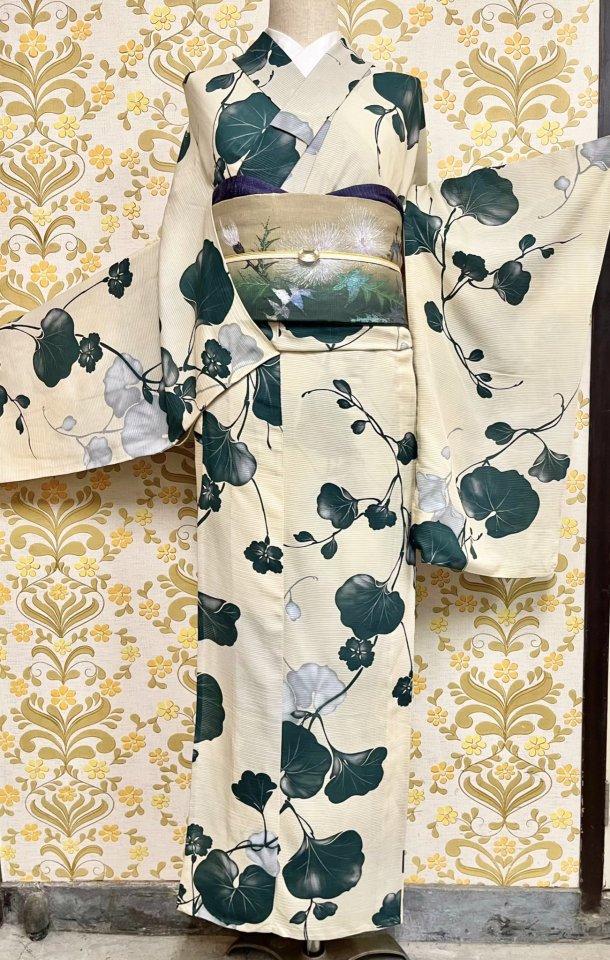



Serene deep greens for this outfit, featuring a tsuwabuki (leopard plant, Japanese silverleaf) kimono, paired with a perfectly matching embroidered azami (thistle) obi
568 notes
·
View notes
Photo

#tbt to my trip to #tokunoshima a few weeks ago. Another beautiful #amami #island with tons of raw #natural beauty. To say “thank you”, people here say “Oboradaren” おぼらだれん! Pictured here is: - Agon's 300 year old Banyan tree and coral brick wall. 阿権の300年ガジュマル - Tokunoshima’s deep coral, outside of Yohama Beach. It’s a challenge to swimmers to jump right in and for ships to dock. - Tokunoshima has rich forests, beautiful oceans, endemic species, and has these super long roads that stretch from the mountains to the coasts, all lined with black sugar crops. - Bullfighting is big on Tokunoshima, so the kids take their bulls for daily walks. - Tokunoshima Nakusami Indoor bullfighting venue. 徳之島なくさみ館 “Waido! Waido” is the local bullfighting chant! - Cycad Tunnel in Kanamisaki 金見崎のソテツトンネル - Enjoying the local Amami Cider, made using the local black sugar! These flavors are black sugar vinegar, mint shikuwaza, and regular shikuwaza. Also, these crazy fruits here are called Atemoya アテモヤ、or the "Pineapple Sugar Apple" - Mushiroze ムシロ瀬 - I met this woman and we talked a lot about her life in Tokunoshima and different plants that grow there including Haruichi, which are the first potatoes of the year to be harvested in Japan. Since it was almost new years, she fed me some Tsuwabuki ツワブキ or Japanese Silverleaf. She said everyone eats it around this time for good luck. - I ate some local サザエ Sazae, aka Turbo cornutus or Horned Turban Shell. #tokunoshimaisland #amami #banyantree #ガジュマル #徳之島 #奄美 #島 #山 #サンゴ #海 #bullfighting #bull #lovers_nippon #cycad #ソテツ #闘牛 #ムシロ瀬 #travel #tree (at 徳之島) https://www.instagram.com/p/BtA-1dKBdm0/?utm_source=ig_tumblr_share&igshid=pt8kejd8n53t
#tbt#tokunoshima#amami#island#natural#tokunoshimaisland#banyantree#ガジュマル#徳之島#奄美#島#山#サンゴ#海#bullfighting#bull#lovers_nippon#cycad#ソテツ#闘牛#ムシロ瀬#travel#tree
1 note
·
View note
Text
Simplicity #086
🌱🌱🌱🌱🌱
One Sunday afternoon
In late November
I took a walk across the pathway
In the mountain village.
I encountered a cluster of
Japanese silverleafs, or Tsuwabuki,
Blooming fully in that hidden path.
How silent !
Air was so pure and clean
Birds were singing
Bright golden yellow of Tsuwabuki
Imbued my heart so brilliantly
Realizing that a fresh winter was
Now just around in this islands nation.
🪴🪴🪴🪴🪴
山間の小径を散策していると
艶葉蕗(つやはぶき)の花が
微笑んでいた。
寂なり。
風は澄み
鳥は囀り
山蕗に
染まる心は
冬の花
🌱🌱🌱🌱🌱
Go to→
https://teruriphoto.tumblr.com/
https://www.instagram.com/teruriphoto
#花#美#beauty#光#flower#japan#light#autumn#early winter#bright golden yellow#pathway#hidden path#mountains#village#mountain village#Japanese silver leaf#Tsuwabuki#艶葉蕗#山蕗#ヤマブキ
0 notes
Text
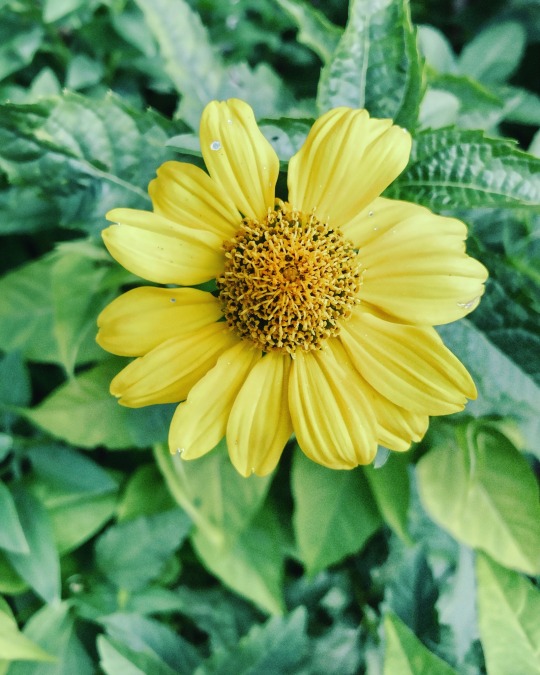
japanese silverleaf. (honmachi,mihara).
@rin358 : filca,kodak portra 160.
0 notes
Photo

Tree Scene 126 - Hajime Namiki, 2007.
Japanese, b.1947-
Colour woodblock print on silverleaf, 7.5 x 7.4 in.
545 notes
·
View notes
Photo

.🌸My flower-ツワブキ (石蕗/Japanese silverleaf).Dec31.’19. (Zushi Beach) https://www.instagram.com/p/B6t_KCMgCRS/?igshid=vlt6kqg0x9cc
0 notes
Photo
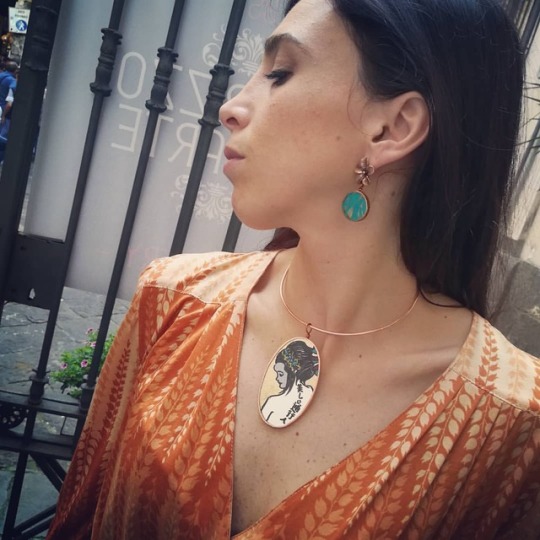
Le belle passanti #adalìcreations #wearingart #jewels #jewelry #glassjewels #glassjewelry #painting #paintingonglass #silverleaf #drawing #handicraft #fashion #geisha #lebellepassanti #thebeautifulpassersby #japanese #japan #risingsun
#jewelry#painting#paintingonglass#wearingart#handicraft#thebeautifulpassersby#drawing#jewels#japanese#geisha#glassjewelry#silverleaf#fashion#risingsun#lebellepassanti#glassjewels#adalìcreations#japan
0 notes

